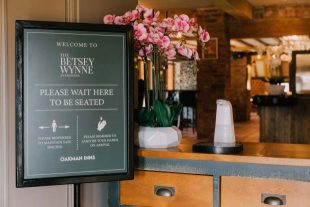NHS Test and Trace makes up a core part of the COVID-secure procedures adopted by Oakman Inns, helping ensure the safety of customers and staff at each of their 28 dine-in pubs.
Jill Scatchard, HR Director at the pub group, explains: “I’ve found the NHS Test and Trace guidance clear and very helpful, especially the images and flow charts associated with them, which we’ve shared with our company’s Health and Safety Committee, our training teams and key managers across our group.
 Soon after lockdown, our company’s staff representatives worked in conjunction with our primary authority in Milton Keynes, and our compliance consultancy, Shield Safety Group, to develop our new COVID-19 safe plan and processes, which included practical, pre-emptive actions to safeguard our teams. These were updated with the NHS Test and Trace guidelines once they were published.
Soon after lockdown, our company’s staff representatives worked in conjunction with our primary authority in Milton Keynes, and our compliance consultancy, Shield Safety Group, to develop our new COVID-19 safe plan and processes, which included practical, pre-emptive actions to safeguard our teams. These were updated with the NHS Test and Trace guidelines once they were published.
We collect contact details of customers through our booking apps and this is saved temporarily for 21 days (if needed by the Test and Trace team).
If an employee develops symptoms at home or has a positive temperature check before their shift, they are advised to stay at home or go home and get a test immediately. Pending the result, their household must also stay at home.
If the test is positive, several actions are taken.
- The General Manager (GM) immediately notifies our company’s leadership group and initiates our agreed internal serious incident management process.
- This process also includes gathering information on relevant shifts and seating plans using our CCTV to support NHS Test and Trace if required.
- At the site the staff member worked at, the most senior manager at site personally oversees and signs off the subsequent cleaning cycle.
- The employee is asked to self-isolate at home for 10 days and return to work once they feel better, while the rest of their household and other employees they came into close contact with self-isolate for 14 days.
If the test is negative, the GM updates our company leadership group and the employee is asked to return to work as soon as they feel better, and their household is free to return to work or leave their home again.
All our sites have reviewed their risk assessments by department in light of the above scenarios, to reduce the impact of close contact risk and the associated potential spread of the virus.
Relevant information about staff (such as their shift times) and guests (such as the date they visited and their contact details) are stored for 21 days via the online booking system. Delivery slots are agreed with suppliers in advance, and goods are placed at the back doors to prevent direct contact with staff members.”
The government has published COVID-19 secure guidance to support businesses to reopen, and keep workers and customers safe so they feel confident to return. To find out about measures your business needs to implement to reopen safely, there is an online tool, which will direct you to guidelines specific to your type of workplace.
If you run a business and would like to know which of the coronavirus support schemes you are eligible for, you can use the business support finder tool. It takes just minutes to complete and will help you easily find support for your business.
Subscribe to updates from this blog, or sign up for our email bulletin.

Leave a comment